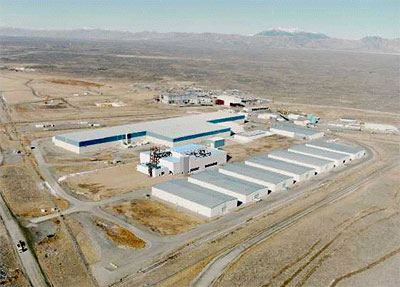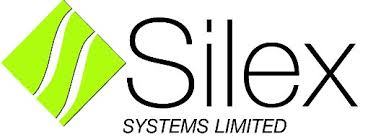
Blog
-
Geiger Readings for Apr 27, 2016
Ambient office = 126 nanosieverts per hourAmbient outside = 99 nanosieverts per hourSoil exposed to rain water = 116 nanosieverts per hourMango from Central Market = 84 nanosieverts per hourTap water = 152 nanosieverts per hourFiltered water = 113 nanosieverts per hour -
Radioactive Waste 171 – Waste Reprocessing At Advanced Mixed Waste Treatment Facility May Not Be Completed by Deadline
I have written about problems at the Idaho National Laboratory before. The INL is a federal nuclear research facility established in 1949 to research nuclear reactors. More than fifty experimental reactors have been constructed at the site. In 1995, an agreement was reached between the Department of Energy (DoE) and the State of Idaho for cleanup of nuclear wastes at INL. The Advanced Mixed Waste Treatment Facility (AMWT) was constructed around 2003 for the “characterization, treatment, packaging, shipment and disposal of an estimated sixty six thousand cubic yards of waste stored at the Idaho facility. The waste includes DOE laboratory and processing materials from the former Rocky Flats nuclear weapons plant in Colorado and various other DOE facilities in Idaho and across the country.” The reprocessed waste is shipped to permanent waste disposal facilities in New Mexico, Nevada and Utah. All of the existing waste is supposed to be disposed of by 2018 under the agreement with the State of Idaho.
In 2005, the research and nuclear waste cleanup were split. Battelle took over management of INL research from Bechtel. CH2M-WG Idaho took over cleanup from Bechtel under the Idaho Cleanup Project. In 2011, the U.S. Department of Energy transferred the cleanup contract at INL from CH2M-WG Idaho to a consortium of nuclear companies called the Idaho Treatment Group to carry out waste processing at the INL site. This summer, the contract for waste processing at AWMTF will be transferred to a company named Fluor.
The AMWTF currently employs around seven hundred people. It is undergoing a remodeling and upgrade worth about ten million dollars. This upgrade was necessary because some of the equipment was deteriorating to the point where more and more money had to be spent just to keep it operating. The DoE hopes that the modifications will help the AMWTF complete the cleanup of nuclear waste by the mandated 2018 deadline. The value of the AMWTF and infrastructure is estimated at about one billion dollars.
The waste is “held in slowly deteriorating metal, wooden and fiberglass boxes and metal drums, the waste includes tools, rags, clothing, sludge and dirt – anything contaminated with a transuranic element, such as plutonium, during the weapon-making process.” Over fifty thousand cubic yards of waste have been processed which leaves around twelve thousand cubic yards to go.
There are some serious problems that may prevent the DoE from meeting 2018 deadline. A great deal of the reprocessed waste was supposed to be shipped to the Waste Isolation Pilot Plant disposal site in New Mexico. Unfortunately, there was an accident there last year and the facility is closed for repairs. Meanwhile, twenty thousand containers of waste have piled up at the AWMTF awaiting shipment to New Mexico.
After the treatment of the existing waste has been completed, there are discussions about shipping other waste to the facility from DoE sites around the U.S. for reprocessing and final shipment to permanent disposal sites. There is no other DoE facility that has the capabilities of the AMWTF. The new waste would come from places such as the Hanford Nuclear Reservation in Washington State and the Los Alamos National Laboratory in New Mexico. Between them, these two sites have over twenty five thousand cubic yards of nuclear waste. The agreement between DoE and Idaho does allow waste from other states to be shipped in and processed as long as it is shipped back out within a year. However, there is public opposition in Idaho for treating additional waste at the AMWTF.
Advanced Mixed Waste Treatment Facility:
-
Geiger Readings for Apr 26, 2016
Ambient office = 81 nanosieverts per hourAmbient outside = 84 nanosieverts per hourSoil exposed to rain water = 67 nanosieverts per hourOrange bell pepper from Central Market = 115 nanosieverts per hourTap water = 73 nanosieverts per hourFiltered water = 58 nanosieverts per hour -
Nuclear Reactors 357 – Global Nuclear Power Facing Serious Problems
It appears that the global nuclear industry is enjoying a renaissance. After being slowed by the Fukushima disaster in early 2011, construction of new reactors is expanding. On the pro nuclear side, there are at least sixty new reactors construction projects worldwide. On the other hand, many of these are in the planned and not contracted phase. With four hundred reactors operating worldwide, sixty new reactors would be a fifteen percent increase in global nuclear capacity. On the other hand, many operating nuclear reactors are reaching the end of their licensed life spans and will need to be shut down. If all the planned reactors are constructed, as of 2030, more reactors will be shut down than will come online so there will be a net decrease in global nuclear power generation.
One of the main arguments these days for the use of nuclear power is the fact that a nuclear power reactor over its life time emits less carbon dioxide than fossil fuel power plants. Proponents of nuclear power are trying to get governments to designate nuclear power as a low-carbon energy source to help mitigate climate change. Critics of nuclear power point out that while nuclear power generation may emit less CO2 that fossil fuel generation, nuclear power still emits more CO2 than sustainable renewable power sources such as hydro, biomass, wind and solar. In addition, sustainable renewable energy plants are more competitive already in some energy markets than nuclear power plants.
I have always maintained that regardless of a variety of other issues, nuclear power may ultimately be rejected by investors on the basis of its viability in today’s energy markets. Five nuclear power reactors in the U.S. have already been shut down because they could not compete with other energy sources such as cheap natural gas and ten more reactors may be shut down soon for the same reasons. Silex Systems has been working with a consortium to bring its next generation uranium enrichment technology to market. Two members of the consortium which together hold more than three quarters of the stock have just announced that they are pulling out of the consortium due to ” changes in business priorities and difficult market conditions.” The big Hinkley Point C nuclear project in the U.K. has been repeatedly delayed because of problems with the financing for the project.
Another threat to global nuclear power is public fear of accidents which was aggravated by the Fukushima disaster triggered by a massive offshore quake. Japan is just in the process of restarting their reactor fleet over major public opposition. Last week, there were multiple serious quakes around Japan including one near Fukushima. This is going to increase the anger and hostility of the Japanese people toward nuclear power and the government that supports it. These quakes will also increase global public resistance to nuclear power projects.
The factors working against nuclear power are piling up and the arguments in favor of nuclear power are being countered. Nuclear power would not even be considered if it were not for the enormous amounts of money that are involved in construction of a nuclear power plant. There is so much money at stake that nuclear projects have a big impact on politics, economics, international trade, diplomacy, etc. It will be interesting to see if the pro or con forces prevail in the nuclear power debate.
-
Geiger Readings for Apr 25, 2016
Ambient office = 80 nanosieverts per hourAmbient outside = 117 nanosieverts per hourSoil exposed to rain water = 98 nanosieverts per hourVine ripened tomato from Central Market = 99 nanosieverts per hourTap water = 68 nanosieverts per hourFiltered water = 60 nanosieverts per hour -
Geiger Readings for Apr 24, 2016
Ambient office = 102 nanosieverts per hourAmbient outside = 97 nanosieverts per hourSoil exposed to rain water = 101 nanosieverts per hourRomaine lettuce from Central Market = 134 nanosieverts per hourTap water = 130 nanosieverts per hourFiltered water = 109 nanosieverts per hour





